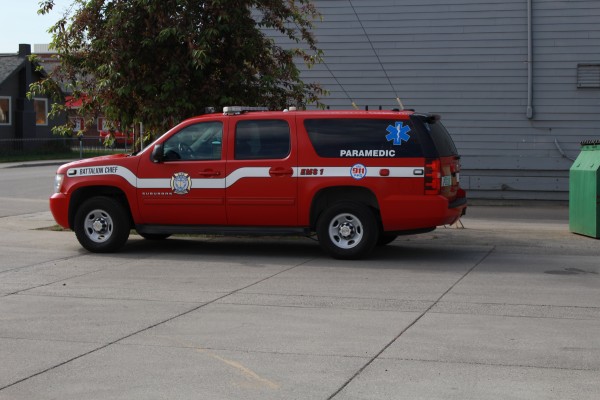
Emergency medics in Anchorage are scrambling to cope with a shortage of critical medications. It’s a problem with the drug supply across the country that’s been happening for several years. But in Alaska’s largest city, first responders and hospitals are spending more resources just trying to keep up.
When asked which medications are in short supply for the Fire Department’s ambulance crews, at the top of Assistant Chief Erich Scheunemann’s list is a common form of epinephrine that comes in pre-loaded syringes.
“It’s used in all of our cardiac arrest resuscitation, and as our primary drug for anaphylaxis, which is a severe allergic reaction,” Scheunemann said.
But it’s been on back-order for almost five months, with no word on when more will be in stock. In the meantime, as a work-around, medics draw epinephrine from viles at a higher concentration and dilute it before administering. The alternate procedure takes 15 to 20 seconds longer, according to Scheunemann. That isn’t a huge delay, but in a crisis those slivers of time can make a difference.
Scheunemann calls the shortage the “new normal” for emergency medical services as nation-wide shortages in basic drugs have rippled across the healthcare system. A 2016 report from the Government Accountability Office cites potential causes of the shortages as low profitability in the market for many older generic medications, supply-line problems and increased inspection standards by the Food and Drug Administration.
For AFD, these kinds of shortages are happening with some of the department’s most vital tools for emergency medicine. Scheunemann said the department has had delays or availability issues for more than 10 medications so far this year.
“Compared to 2016 it just seems a bit more prevalent,” Scheunemann said.
AFD has different strategies to cope with supply problems. Sometimes they’ll find an alternative medication that’s similar, like substituting the epinephrine product medics use, or going with Lactated Ringers when bags of normal saline aren’t available. If a drug is scarce or there’s a delay in getting more, medics will carry a limited amount and drive back to a central location to re-stock after using it on a patient. The protocol helps managers stay on top of the tight inventories.
Tracking the fluctuating supplies and keeping staff appropriately trained has downstream effects on the AFD’s resources.
“It does take an inordinate amount of extra staff hours to mitigate the situation when it comes up,” Scheunemann said.
Scheunemann didn’t have an estimate for all the personnel hours spent on extra trips to re-stock, training staff in new procedures and tracking the logistics of drugs getting scarce, running out or coming back in stock.
It’s not just fire departments that are seeing the constriction.
“It does appear to me the frequency of shortages–and sometimes even the severity of them–seem to be getting worse,” Andre Neptune, the head of Providence Hospital’s Pharmaceutical Care Services for the last 10 years, said.
The list of medications that are hard to keep stocked at Providence is broad-based, and includes everything from antibiotics to anesthetic agents, as well as pain medications and drugs for chemotherapy. Neptune estimates that for the team in charge of the hospital’s pharmacy inventory, about a quarter of its time is spent managing supply levels.
“When I started my career 30 years ago, shortages were not a daily conversation, it was a rare or occasional conversation,” Neptune said. “Today it’s a daily conversation.”
There have been some short term solutions in the last few months, like the FDA extending expiration dates on batches of some medications so they can stay on shelves a few months longer. But no major structural reforms appear to be on the horizon.
The GAO report notes that such shortages can affect a healthcare providers ability to “safely and effectively care for patients.” Scheunemann said that no one in AFD’s care has died or been hurt as a result of a problems with the drug supply, but that work-arounds and alternatives to best-practices create more of an “opportunity for error.”
Zachariah Hughes reports on city & state politics, arts & culture, drugs, and military affairs in Anchorage and South Central Alaska.
@ZachHughesAK About Zachariah




